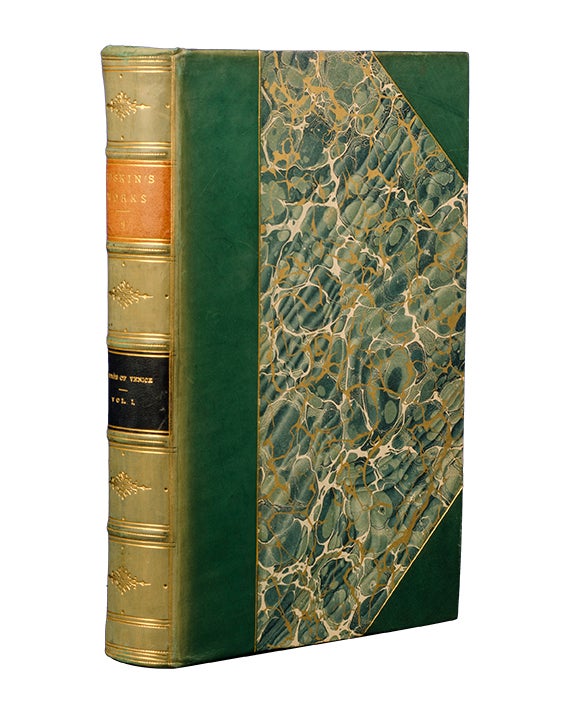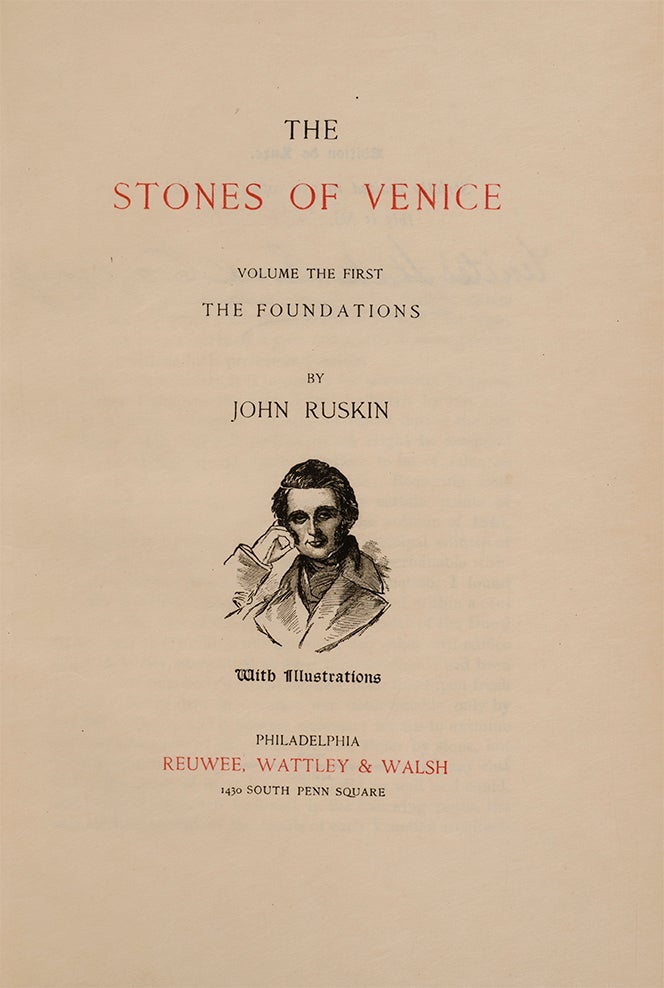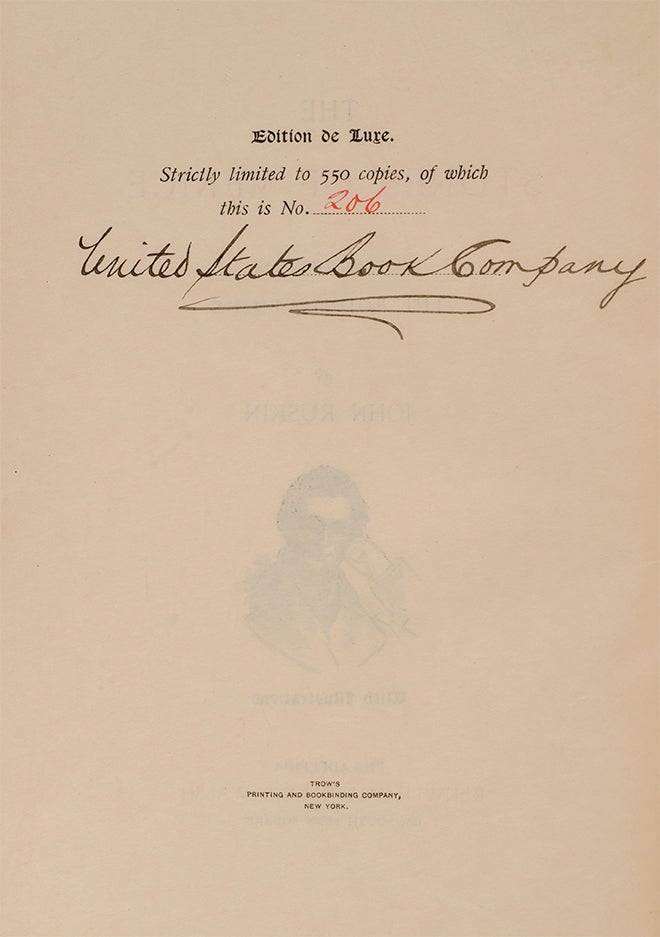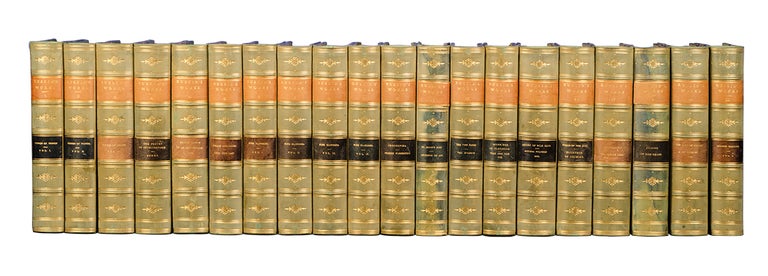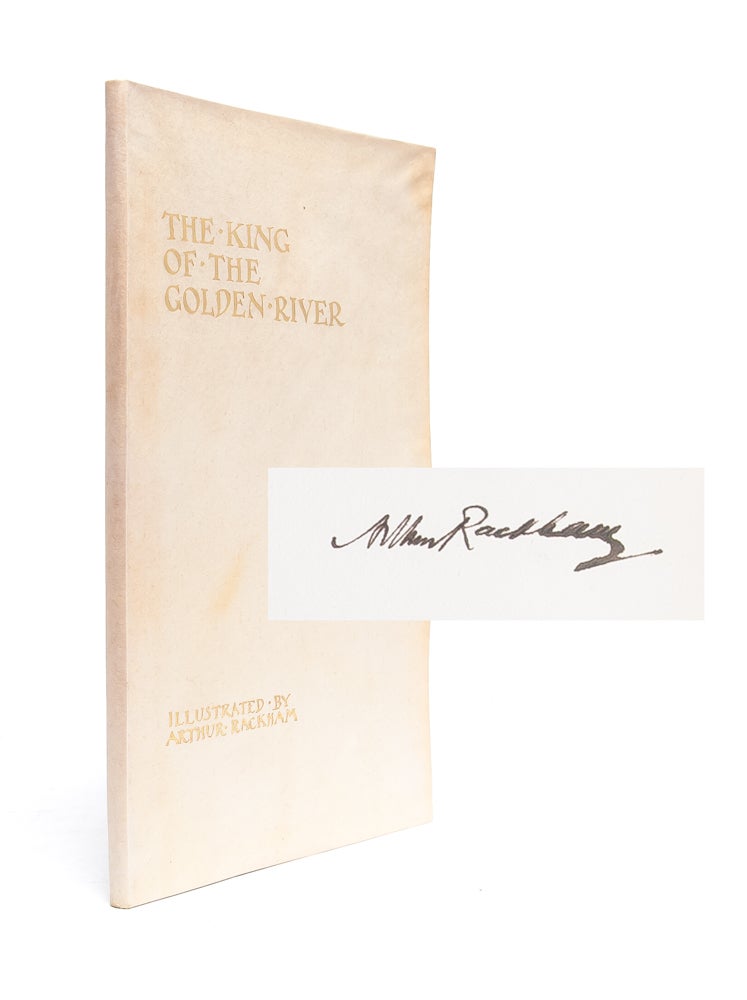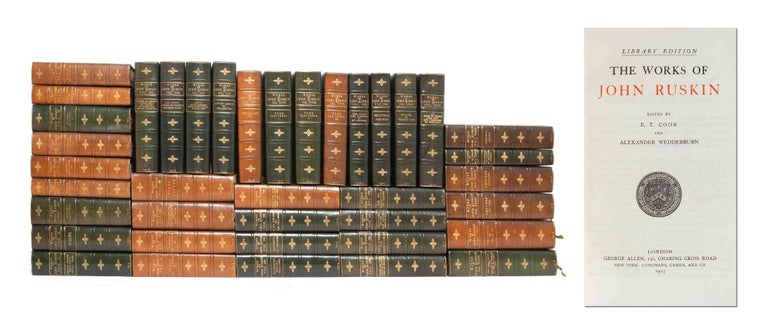The Works of John Ruskin (in 26 vols.)
Philadelphia: Reuwee, Wattley & Walsh, 1891.
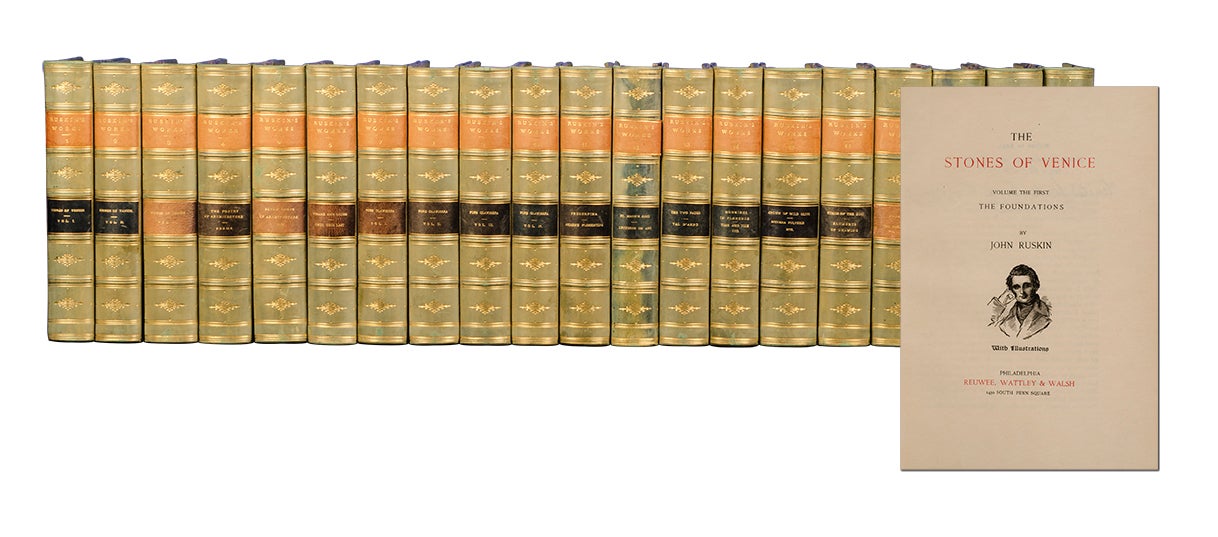

The Works of John Ruskin (in 26 vols.)
Philadelphia: Reuwee, Wattley & Walsh, 1891. Edition de Luxe. Strictly limited to 550 copies, of which this is 206. Signed in black ink by The United States Book Company. Twenty-six octavo volumes (8 3/4 x 5 7/8 inches; 222 x 150 mm.). Early twentieth century three-quarter green calf over green, gold and white marbled boards ruled in gilt. Spines with five shallow raised bands, decoratively tooled in compartments. Brown and dark blue morocco labels lettered in gilt. Top edge gilt, others uncut, green, gold and white marbled endpapers. Water damage to volumes 12, 17, and 18. Engraved bookplate of I.W. Hellman Junior on front paste-down of each volume.Title-pages printed in red and black. Profusely illustrated throughout. With water damage to volumes 12, 17, and 18, and uniform fading to spines; still a pleasing set overall.
John Ruskin was an “English writer, critic, and artist who championed the Gothic Revival movement in architecture and the decorative arts and had a strong influence upon public taste in art in Victorian England” (Merriam-Webster’s Encyclopedia of Literature). His major works include Modern Painters (1843-1860), The Seven Lamps of Architecture (1849), The Stones of Venice (1851-1853), Lectures on Architecture and Painting (1854), The Political Economy of Art (1857), Unto This Last (1862), Essays on Political Economy (1862-1863, later Munera Pulveris, 1872), Sesame and Lilies (1865), and Fors Clavigera: Letters to the Workmen and Labourers of Great Britain (1871-1884). His story The King of the Golden River (1851) was one of the earliest English fantasies for children. (Item #3770)

